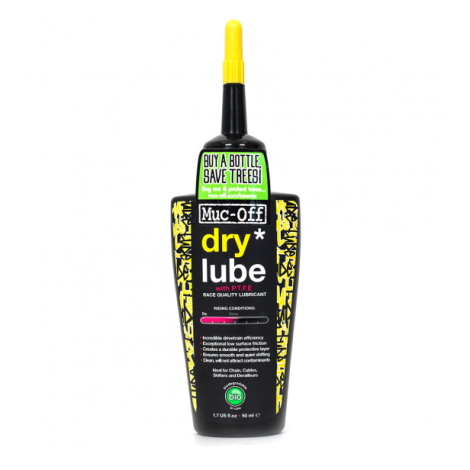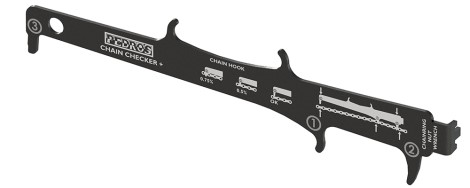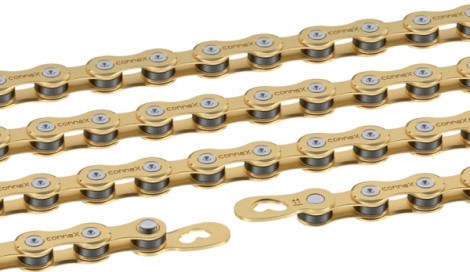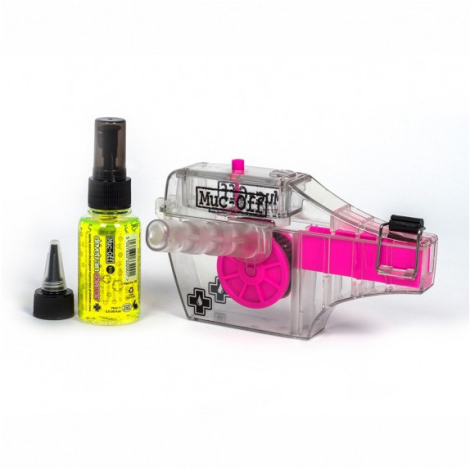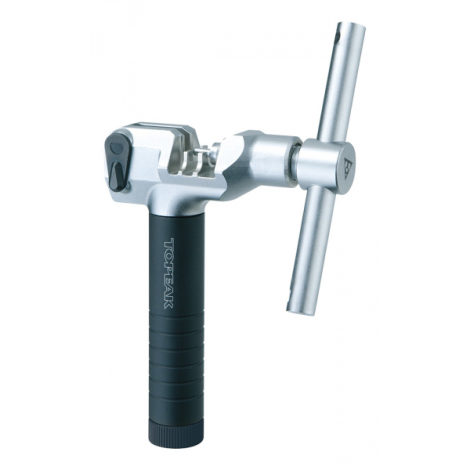Ok, there isn’t an official ‘Love Your Chain Day’. But there really should be…
If there is one vital bit of the bike which can get neglected, it’s the chain. Having limited opportunity for updating its look, bike chains have remained basically the same for about 130 years. They’ve just got much thinner, forced on a diet to fit cassettes which have gained more sprockets. They simply don’t have the same appeal as the ‘A-list-celebrities’ of the bike parts world. Parts such as saddles, pedals and handlebars, however they do all the ‘heavy lifting’ on the bike, with barely any thanks.
Anyone feeling sorry for their bike chain yet?
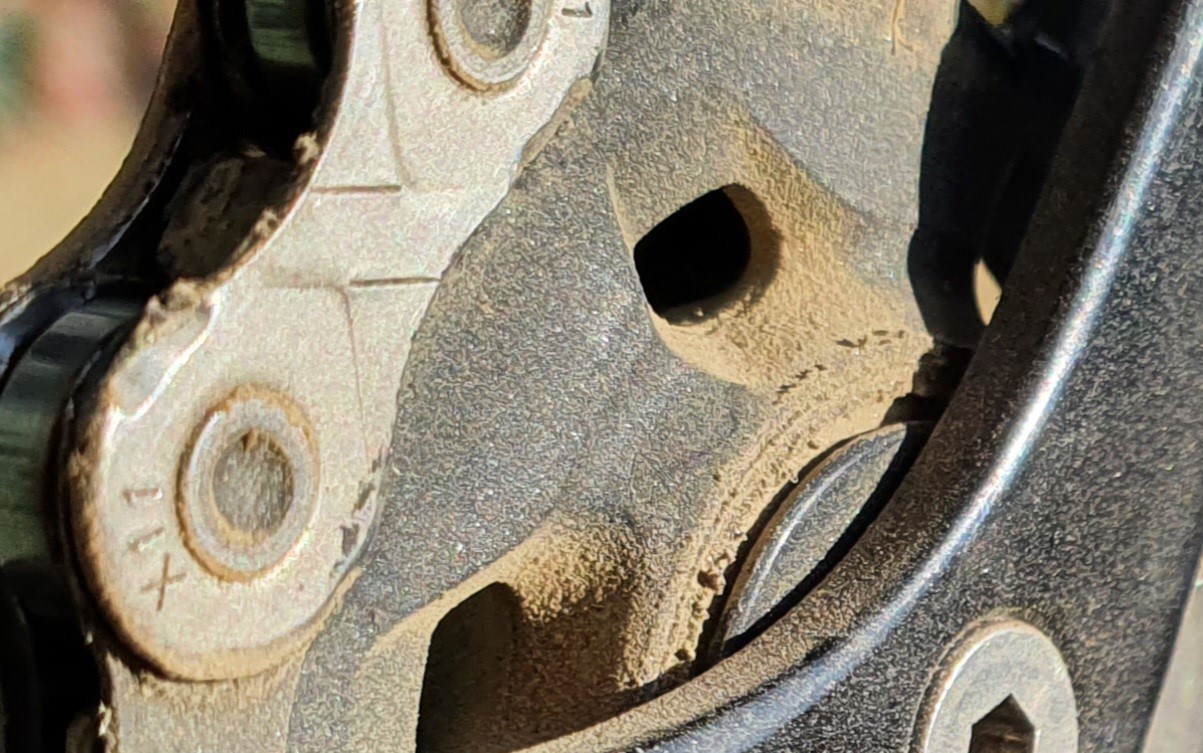
Keep the Chain Clean
A clean chain is a happy one. Its unfortunate working position (near the road and handy for collecting grit and road / trail debris) means that of all the parts on a bike, the chain collects dirt and needs regular TLC. A specific chain cleaning fluid or regular degreaser will get the thick of the wearing grime off your chain. Chain cleaning baths and brushes do a great job of getting the gunk from between the links. Finally, dressing the clean chain in chain lube will keep performing at its best.
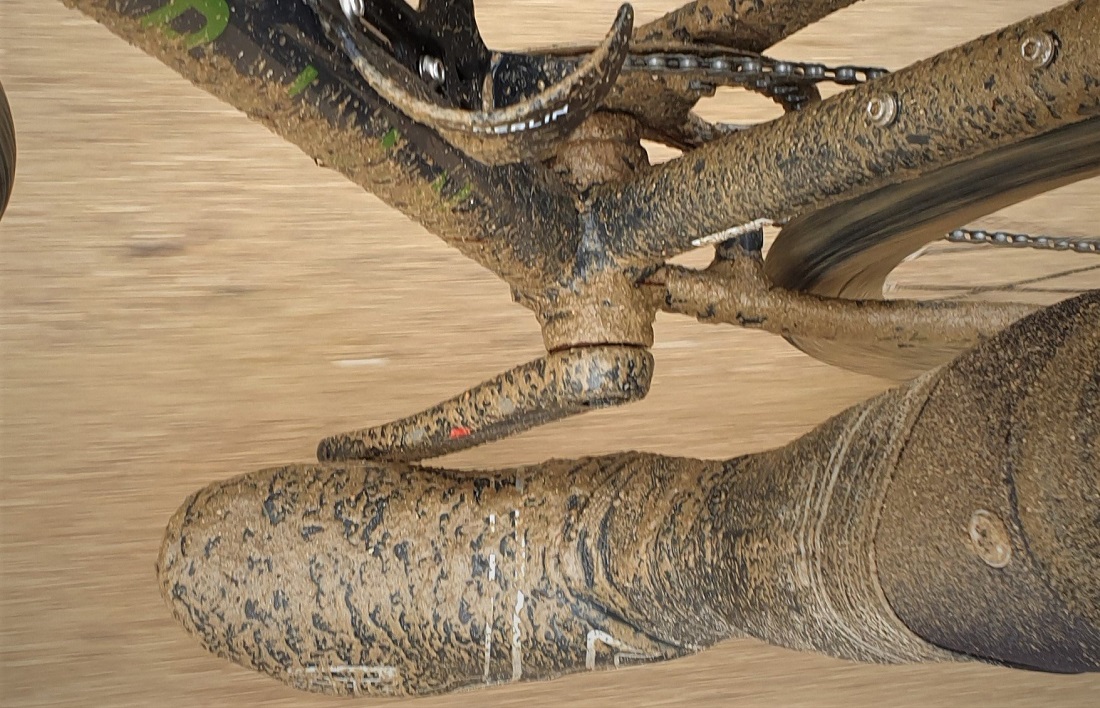
Filth Spreads
The quick-link joining system makes it super easy to remove the chain off the bike and give it a really good clean. While the chain is off your bike, use this opportunity to clean the components which it comes into contact with; these parts also get dirty and worn over time. Jockey wheels in the rear-derailleur get worn prematurely if they are not kept clean. Chainrings too, are open to rapid wearing if they are not kept clean. As well as the outer profile of the chainring teeth, make sure that the inner ‘U’ of the teeth is also kept clean. If you go to the trouble of cleaning the chain well, not cleaning your chainrings and jockey wheels can undo all your hard work
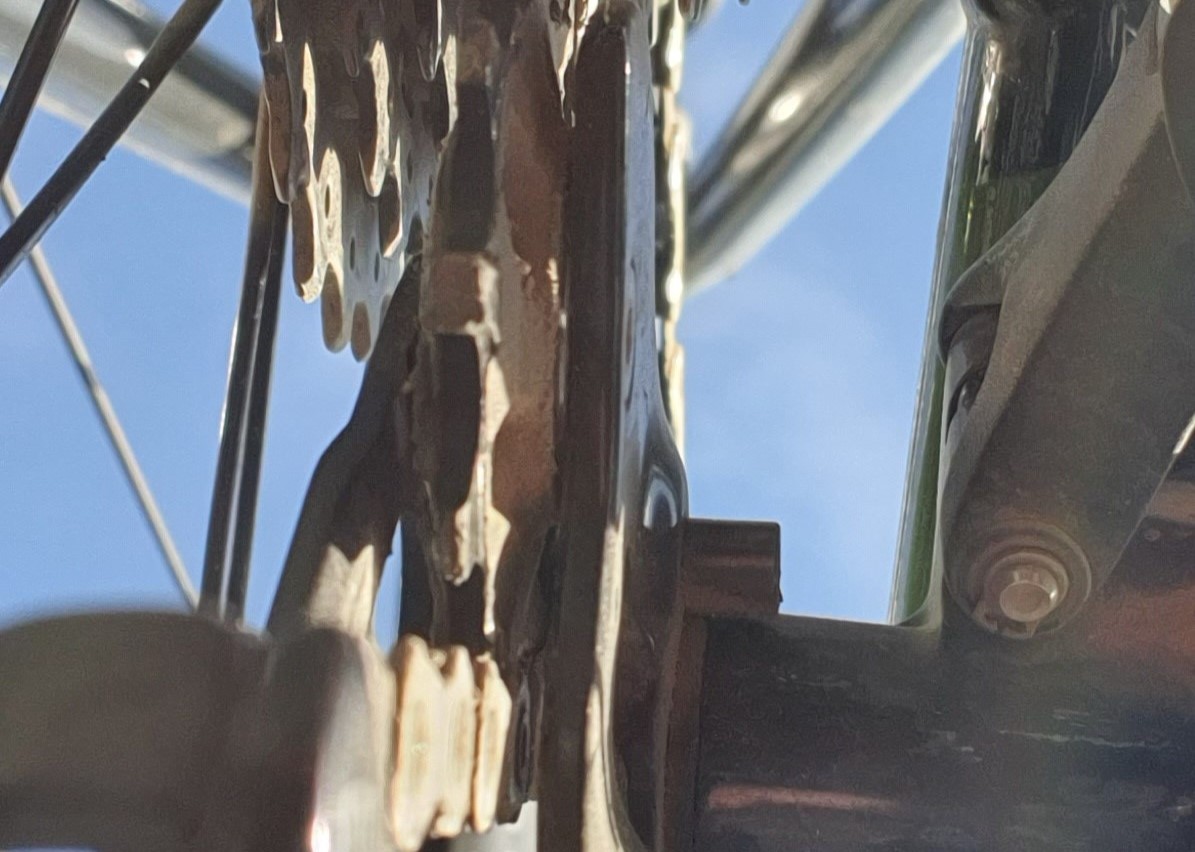 .
.
Transmission revamp
Once your chain and components are clean and dry, apply a decent quality lube to the chain. Change up through the gears after applying. It should now be at its best and ready for many more miles of service. It is worth bearing in mind that an average transmission accounts for somewhere between 10 and 20 watts of power. Each link’s moving parts have friction against each other and reducing that friction through having a clean, lubricated chain will make your bike more efficient.
Chain Lube on Lube?!##
One of the biggest mistakes you can make while a looking after a chain, is to miss out the whole ‘cleaning’ thing and just keep adding more lubrication – thinking you’ve found a clever short-cut. WRONG! Adding fresh lube to dirty old lube just makes more dirty lube and can leave you with a complete gooey-mess of a transmission – If you do this, listen closely, you will hear the founders of Shimano and Campagnolo turning in their graves. Just clean it!
What you wearing?
Checking chain-wear is a good way to keep on top of your bike’s transmission health. Gradually they get worn and can also wear cassettes and turn chainring teeth into shark fins (below). Swapping a worn one before it prematurely wears other components is the most economical way to look after your bike’s drivetrain. A chain checker tool might seem extravagant, but it can save you money in the long run – chains are far more cost-effective to replace than cassettes and chainrings.
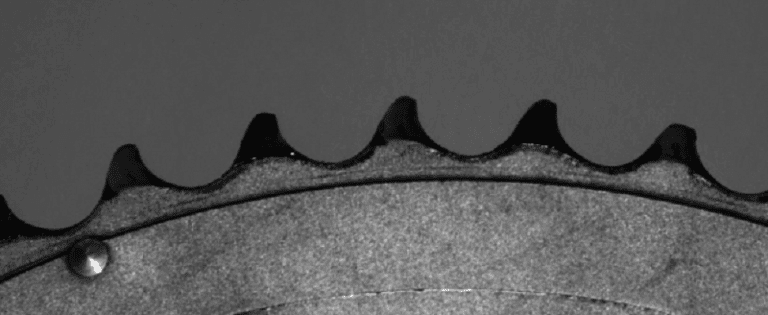
Hanger straight
Visually check the vertical alignment of the rear derailleur hanger – this could provide the answer to either an annoying wearing noise from the chain or a feel of increased friction. Rear derailleur hangers are relatively easy to bend and a bent one could be the root cause of any transmission noise and excessive wear.
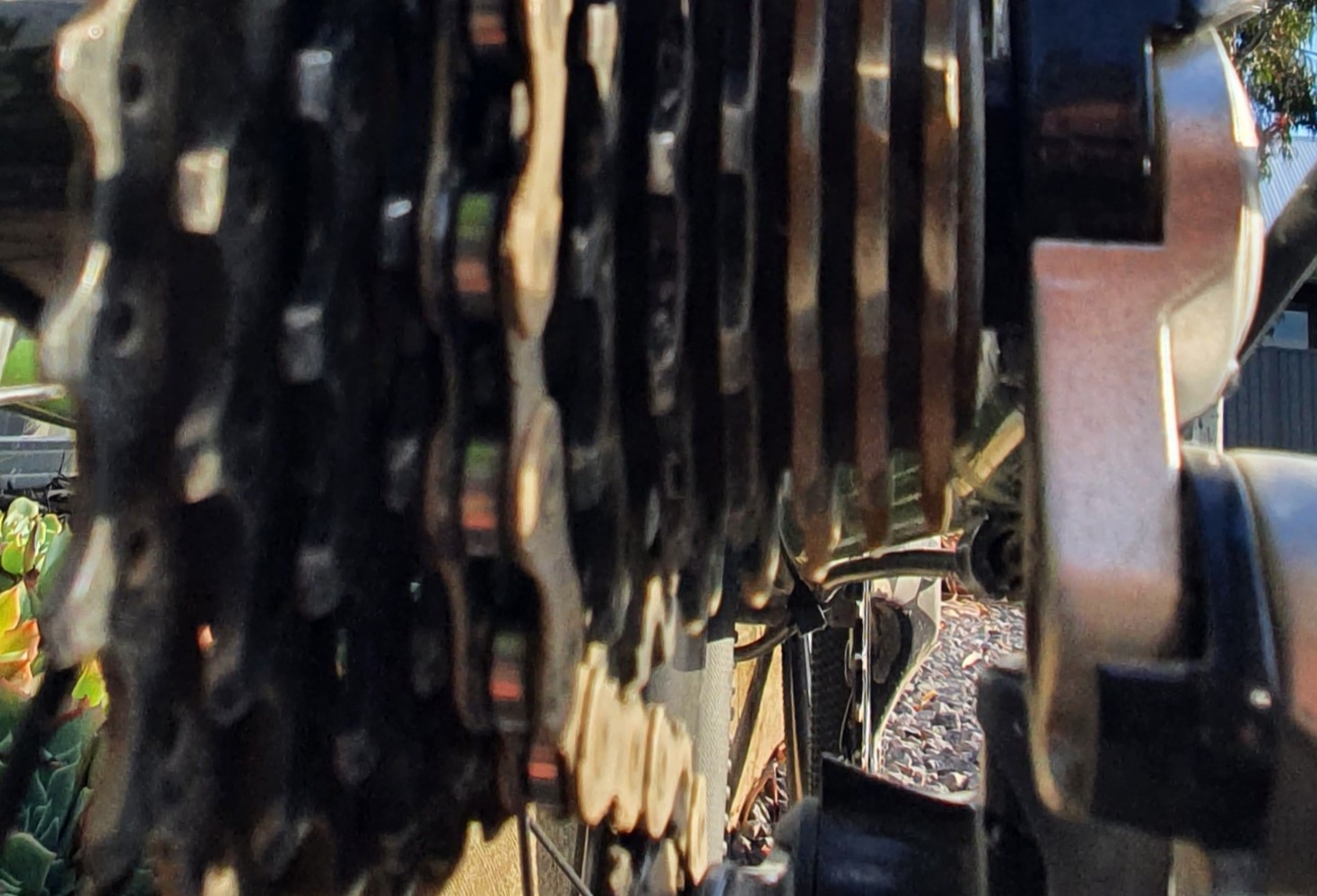
Supply Chain
Chains typically come with 114 links, however many Road and MTB’s require about 108 links on average. This is why a specific tool is an invaluable part of any bike riders tool kit. Chain tools can also be used to fix a stiff link in a chain. Make sure your chain tool is suitable for the one on your bike. For example, if the one on your bike is 11 speed you will need an 11 speed compatible chain tool. Collect the spare, left over links each time you fit a new one and… Hey Presto, you get a free one after you buy 18 chains! (approx ? )
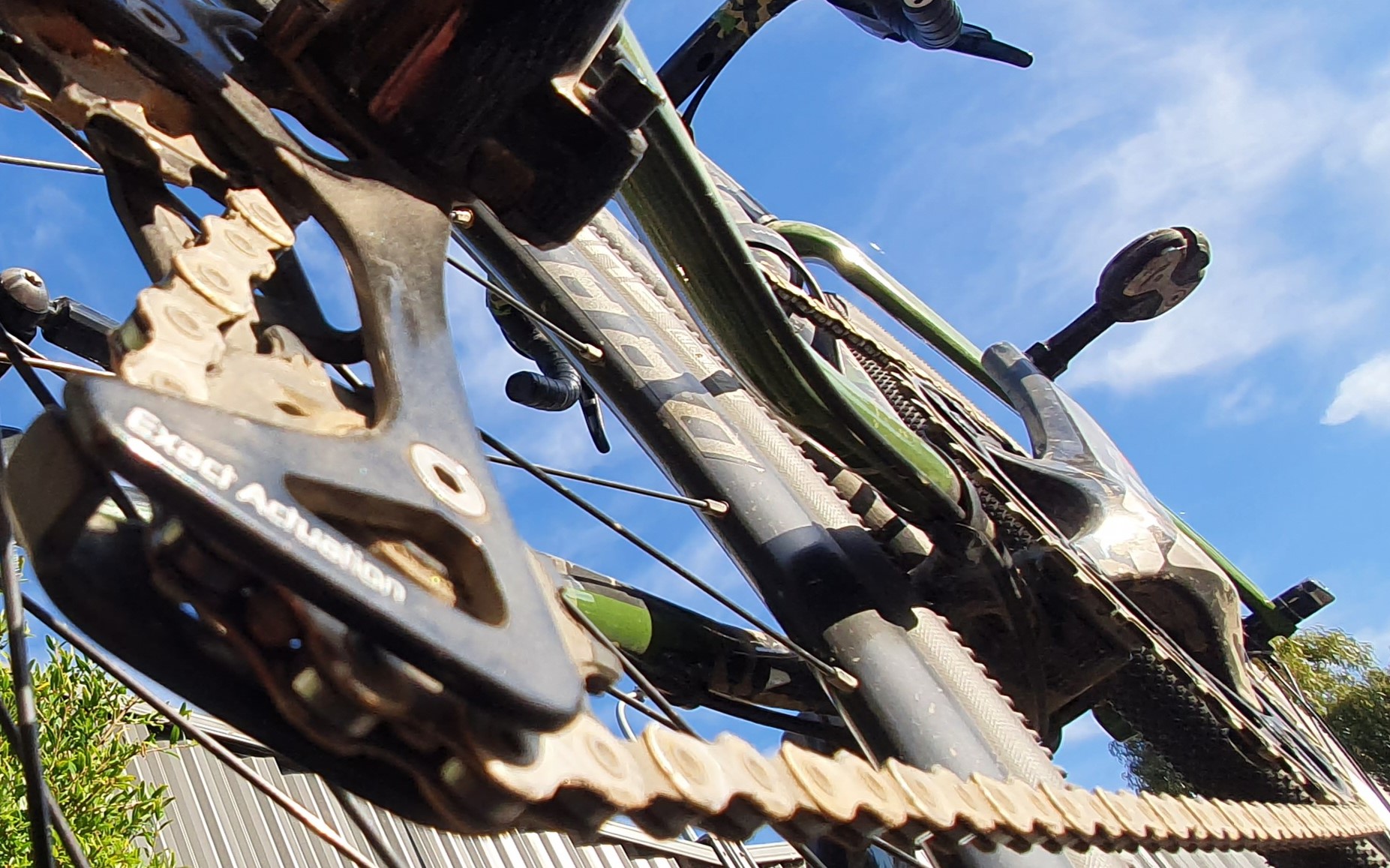
Linked In
Before joining links (also known as quick link, missing link, power link) were invented, the only way to join a chain was using a chain tool. Joining links are great for quick and easy (tool-less) removal of chains for cleaning. Most chains come with the manufacturers own joining link included. Joining links can also be bought separately and are great to carry with tools, they weigh very little and can save the day should you break your chain whilst out on a ride.
Five Fun Facts about Chains!
- Tour De France riders can get through up to 3 on their main bike throughout the three week long race.
- Track sprinters use wider 1/8 inch chain, sprocket and chainring to transmit their extra explosive power.
- Bradley Wiggins hour record chain cost £6000 and is said to be the fastest bike chain ever produced.
- Sketches drawn by Leonardo Da Vinci from the 16th century show a design for a chain with a roller bearing.
- More songs have been written about chains than any other bike part, including;
Chains – Fleetwood Mac
Back on the Chain Gang – Pretenders
Chains – Tina Arena
Chain Reaction – Dianna Ross

